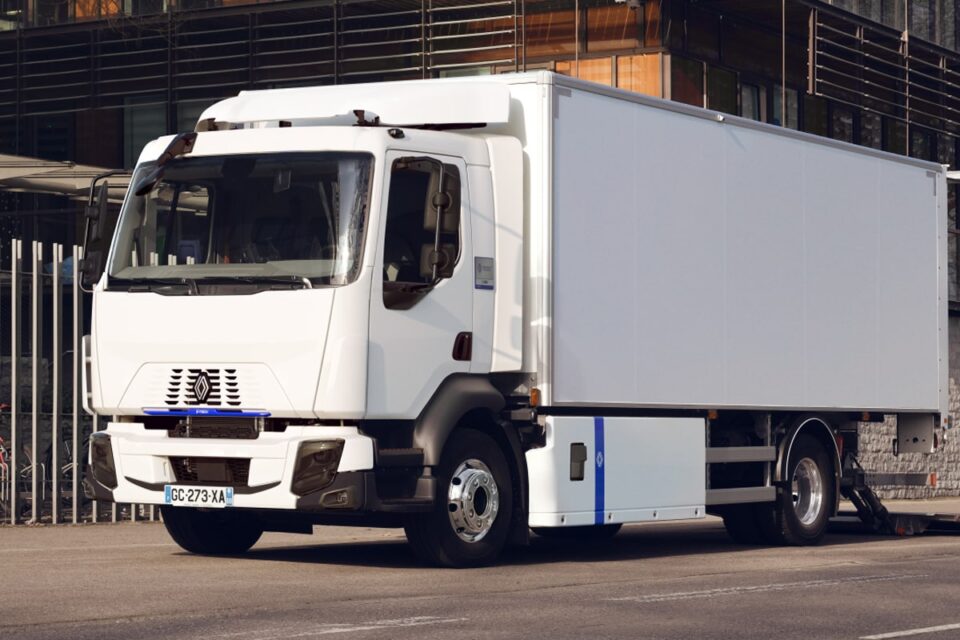Buying a used vehicle should never be rushed. It’s vital to take time to thoroughly inspect, assess, and compare different options. While the Renault brand offers a wide range of robust trucks, knowing how to inspect and evaluate the condition of a second-hand unit is critical for making an informed decision. The goal is to avoid unwanted surprises after purchase, and to achieve that, the right preparation is needed.
Below is a comprehensive guide that covers what to look for when buying a used Renault truck. We will walk through the key points to consider and practical tips on how to make the right choice.
Key Points to Remember
- Thoroughly inspect the engine, transmission, and chassis.
- Review maintenance records for consistency.
- Understand the specific type of truck required for your operations.
- Verify the legal documents of the vehicle.
- Get a professional mechanic for an unbiased assessment.
1. Decide on the Right Type of Truck

Before starting the buying process, it is important to identify what type of truck suits your business operations. Are you looking for a multi-purpose vehicle, a tipper, or a tractor unit? This decision determines what features to focus on during your inspection. For instance, if you’re considering a tractor unit, explore the options available on the market by checking trusted sources like Renault Trucks.
Not every truck will fit the same business. Determining the workload the truck will handle is essential to ensure you buy the right model that can meet your specific demands. Different trucks have varied configurations, such as axle options and weight capacity. Understanding your own needs first simplifies the selection process.
2. Inspect the Engine and Transmission
The heart of any vehicle lies in its engine. The engine’s performance directly affects how the truck runs and its long-term reliability. When inspecting a used Renault truck, pay close attention to the engine. Look for leaks, excessive smoke, or any unusual noise during startup. A healthy engine will run smoothly without knocking or sputtering.
The transmission is equally important. Test-drive the truck and shift through all gears to ensure the transmission operates smoothly without any delay or hesitation. Any grinding or slipping while shifting is a red flag that should not be ignored. It is often best to have a trusted mechanic accompany you during this step. They will have the expertise to detect potential problems you might overlook.
3. Review Maintenance Records
A well-maintained truck comes with detailed service records. Maintenance records will tell you how frequently the truck received care, whether it was repaired at certified service centers, and if any major repairs have been done. Reviewing these records is crucial in identifying any recurring problems or major component replacements.
Regular maintenance is a good indicator of a truck’s health. If the previous owner took care of oil changes, brake servicing, and fluid checks, it reflects on how the truck will perform in the long run. Always verify the authenticity of the records to avoid any discrepancies.
4. Assess the Chassis and Suspension

The truck’s chassis bears the bulk of the load, and wear and tear on the chassis over time is common. However, significant cracks or rust damage could indicate major structural problems. Examine the chassis thoroughly for signs of corrosion or damage, particularly around high-stress areas such as the suspension mounts.
The suspension system should also be inspected closely. A healthy suspension ensures the truck can handle heavy loads and operate smoothly on various terrains. Look for worn-out or damaged suspension components, as replacing them can be costly.
5. Verify the Vehicle’s Legal Documents
Every vehicle has legal paperwork that must be up to date. When buying a used Renault truck, ensure all documentation is in order, including the registration, road tax, and any outstanding finance agreements. Check the vehicle’s identification number (VIN) to confirm it matches the documents provided. This step ensures you are not buying a stolen vehicle or one that carries legal issues.
It’s essential to confirm that there are no existing financial liabilities tied to the truck, such as unpaid loans or fines. Verifying the paperwork beforehand will save you from legal complications down the road.
6. Tires and Brakes

Check the condition of the tires for signs of wear, cracks, or uneven tread depth. If the tires are significantly worn, you may need to replace them immediately, adding to the initial cost. Also, ensure that the tires match the load specifications for the truck’s intended use.
Brakes are critical for operational safety. Test the brakes during your test drive, checking for unusual sounds like grinding or squeaking. Worn-out brakes can lead to dangerous situations and costly replacements. Always be mindful of the condition of both the front and rear braking systems.
7. Cab Interior and Technology
The interior of the truck may seem like a minor detail, but driver comfort can have a significant impact on long-term operations. A clean, well-maintained interior indicates how the previous owner treated the truck. Look for signs of excessive wear, such as damaged seats, faulty switches, or broken dashboard components.
Evaluate the truck’s built-in technology as well. Many modern trucks are equipped with GPS systems, advanced driver assistance features, and fuel efficiency tools. Ensure that any technology you expect in the truck is functioning properly, as it can affect both driver safety and business productivity.
8. Find Professional Help
Even if you feel confident in your assessment, consulting with a mechanic or professional truck inspector is always a smart choice. They will provide an unbiased evaluation of the vehicle’s condition and help identify issues you may have missed.
An experienced mechanic will check the engine, transmission, brakes, suspension, and electronic systems thoroughly. It’s a small investment that can save you from significant expenses later on.
9. Check Local Listings and Compare
There are many platforms where you can find used trucks for sale, but the key is to compare options. If you’re specifically looking for reliable used trucks for sale in the UK, checking different platforms’ dealer networks ensures that you get a good deal on a trusted vehicle. These networks offer comprehensive listings with various models, ages, and conditions, allowing you to make an informed decision.
Never rush into purchasing without comparing several options first. This process gives you a better understanding of market prices, vehicle conditions, and what offers are available. It also provides leverage when negotiating the final price.
10. Final Negotiations
Once you’ve found a truck that meets all your requirements, it’s time to negotiate the price. Be sure to factor in any repairs or replacements you might need to make after the purchase. Highlight any issues identified during your inspection and use them to lower the asking price if necessary.
A fair negotiation ensures that both parties walk away satisfied, and you end up with a solid truck without overpaying.
Conclusion

Buying a used truck can be a smart financial decision, but it requires careful attention to detail. By thoroughly inspecting the engine, transmission, chassis, tires, and legal documentation, you can make an informed purchase. Bringing in a mechanic for expert advice further enhances your chances of avoiding any major pitfalls. Always remember that the right preparation, research, and negotiation will help you secure a reliable truck that serves your business efficiently.

